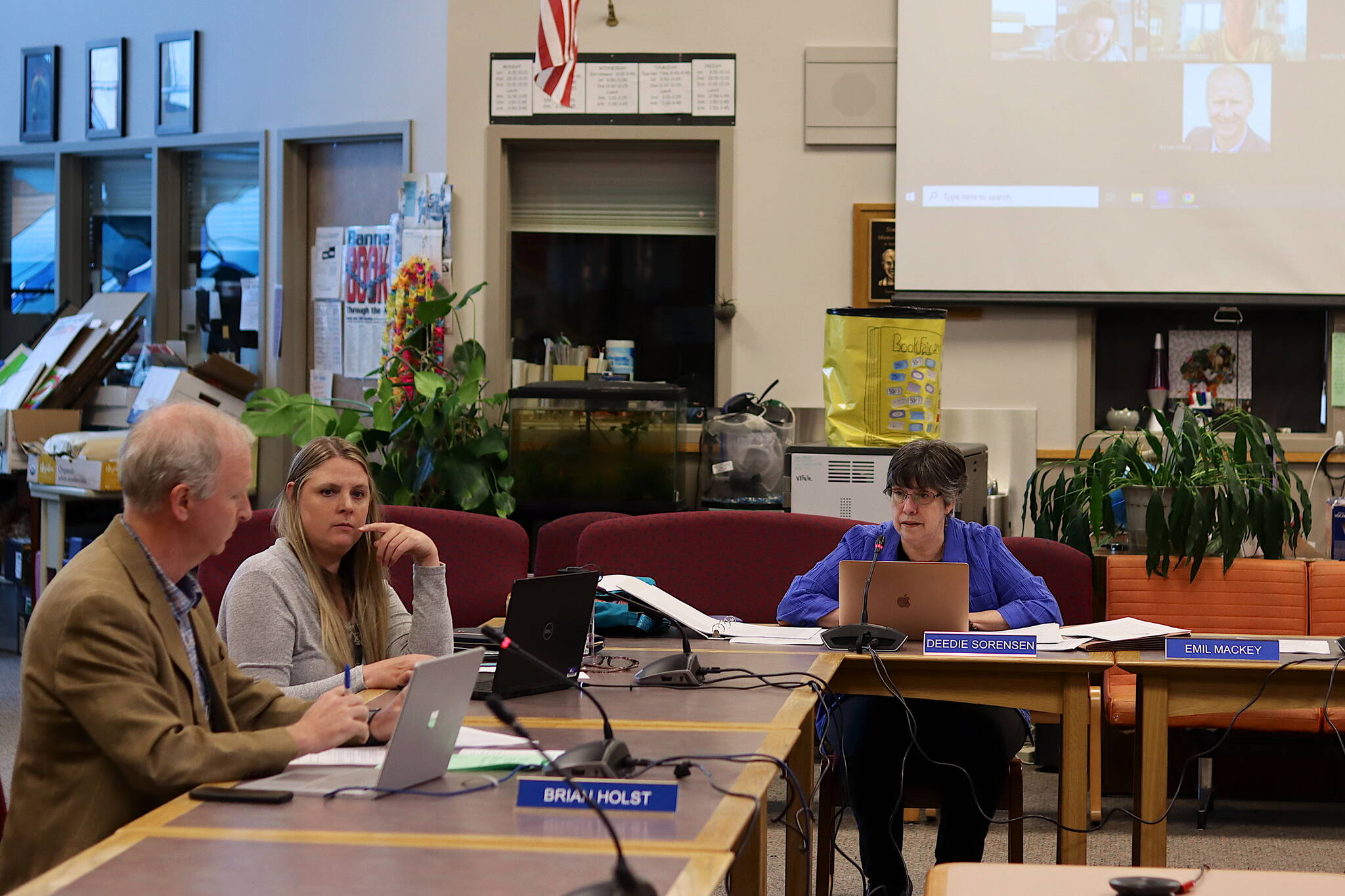The cuts to the Juneau School District to offset state funds vetoed by the governor were quick. The battle over the lost funds apparently won’t be, as school board members statewide are meeting this week to discuss lawsuits and other legal actions to take against the state.
Two full-time jobs were eliminated and the equivalent of 3.6 other full-time jobs are now being covered with remaining COVID-19 relief funds following the budget adjustments by the Juneau Board of Education on Tuesday. The board also voted to use $112,181 from its leftover general fund balance to cover the remainder of an unplanned deficit.
The adjustments were necessary due to a $758,181 shortfall the district was left with when Gov. Mike Dunleavy in June vetoed half of a one-time increase of the $680 in per-student education funding approved by the Alaska Legislature. Juneau’s school board, which passed its budget while the increase was still being debated at the Capitol, based its spending plan on a $430 per-student increase, while Dunleavy’s veto lowered the increase to $340.
The two jobs eliminated were a $140,000 administrative services position and a $110,000 HomeBridge position. Board member Brian Holst said after the meeting the HomeBridge worker would have replaced an employee who retired from the homeschool/correspondence program, but the surge in demand for the program the past few years appears to have tapered off.
“The administration said that given the tendency that the homeschool numbers have been heading back down they think they can manage,” he said.
The school board had to schedule the unplanned meeting on Tuesday to deal with the vetoed funding since the district’s budget has to be submitted to the state Department of Education and Early Development by July 15. There was no discussion of the revised budget during Tuesday’s meeting and it passed unanimously.
But discussion about the larger overall issue of state funding came up during the evening and is expected to be a dominant topic among state board members during the next few days. Holst said he is attending a four-day Association of Alaska School Boards meeting starting Wednesday and “one of the main topics that we’re going to be discussing tomorrow is the actions that AASB is considering taking, given the lack of funding by the state.”
“We have a series of people that will be presenting to us — some politicians, some legal experts as well, talking about the options that we all face, we often consider as school districts in regards to the sufficiency of funding,” he said.
Among the options that have been pursued elsewhere are lawsuits against the state and voter initiatives, Holst said.
“The Association of School Boards is keenly concerned about a consistent lack of funding, putting the veto in with very little explanation as to the reason why,” he said, adding AASB is hoping to develop options to present during an AASB delegate assembly meeting in October.
Expressing support for such action was Juneau school board Vice President Emil Mackey, who said AASB “should consider every legal opportunity” because he believes the level of funding has been unconstitutionally low for the past several years.
“The state has a responsibility to provide a free public education,” he said. “While it does not explicitly state so, it is at least implicit — if not required under the meaning of the wordage — that it also has to be adequate. For example, the state cannot just give $1 to public education and say that we’ve fulfilled our obligation.”
Education funding remained virtually unchanged between 2017 and the 2023 fiscal year that ended June 30, with the $5,960 per student during the past year being a $30 increase from the previous six years. Educators and many lawmakers said an increase of $1,200 to $1,300 would be needed during the next fiscal year to offset inflation during that time span, but legislation making a permanent increase to the per-student funding formula failed to pass before the Legislature adjourned in May.
Instead, the Legislature approved a one-time $175 million funding increase, equating to $680 per student.
AASB Executive Director Lon Garrison, in a message, said this week’s intent is “just to have a conversation around the lack of education funding.”
“We didn’t get to where we would hope to be with the Legislature and the governor this year, so the board will be looking at all options to move education funding forward,” he said.
Lawsuits challenging various aspects of state funding for schools have been filed in a multitude of states, with mixed outcomes. Among those related to Alaska’s situation is an education association in Wyoming that filed a lawsuit last year alleging funding has failed to match the pace of inflation, while a similar lawsuit in North Carolina has gone through three decades of legal wrangling.
• Contact Mark Sabbatini at mark.sabbatini@juneauempire.com or (907) 957-2306.

